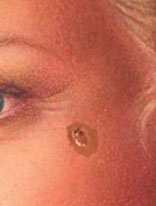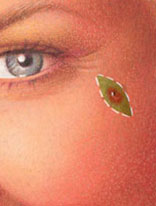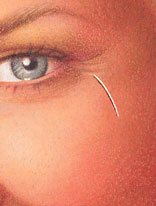Everyone who spends time outside without sun protection is at risk for developing skin cancer—the most common form of cancer in the nation—and even brief periods spent outdoors can expose individuals to the harmful ultraviolet rays (UV) of the sun. In addition to increasing the risk for skin cancer, the sun also is primarily responsible for approximately 90 percent of common signs of aging. Fortunately, there are numerous procedures now available to treat this damaging condition. In fact, skin cancer treatments have become one of the most commonly performed reconstructive plastic surgery procedures. At our practice, extensively trained plastic surgeon Neal Goldberg, MD offers some of the most advanced skin cancer treatments available.
The most common form of skin cancer is basal cell carcinoma (BCC), with over 2.8 million instances of this condition diagnosed in the U.S. every year. Though rarely dangerous, BCCs potentially can be disfiguring if left untreated. The carcinoma begins in the basal cells of the lower epidermis (upper layer of skin), typically developing quite slowly. These growths rarely metastasize or become fatal; however, they may cause substantial visible damage to the skin if neglected.
After BCCs, the next most common form of skin cancer is called squamous cell carcinoma, or SCC. This type of cancer also develops slowly; however, there is an increased chance of metastasizing and becoming a serious health risk. SCCs begin in the squamous cells of the upper epidermis layers, higher up than with the BCCs. Every year, this variety of skin cancer is responsible for about 2,500 deaths in the U.S.
- Basal cell carcinoma appears in many forms, but often begins as a small, pearly nodule.
- Small skin cancers are often removed with ease in Dr. Goldberg’s office.
- Simple excision typically leaves a thin barely visible scar.
The third category of skin cancer is called melanoma. Although this type is the rarest, melanoma is also the most deadly. Melanoma begins in the basal layer of the epidermis, the deepest of the five layers. This carcinoma often be recognized as an unusual looking mole, typically appearing uneven in shape or color, larger than the head of a pencil eraser, or exhibiting changes in shape or color over time. The mark may appear as a brand new mole or develop within an existing one. There can be a strong genetic component associated with melanoma, as well as a high recurrence rate. It is important to diagnose and treat melanoma quickly, as this condition is responsible for approximately 9,710 deaths annually.
For more information about skin cancer treatments, or if you wish to schedule a consultation with Dr. Goldberg, please contact us today.
“I was sent to Dr. Neal Goldberg with an open surgical wound on my head. A circular-sized Basal Cell Carcinoma was removed from the front portion of my scalp and a portion of my hair had to be shaved for it’s removal. Dr. Goldberg’s office staff was welcoming and kind. I arrived at what would normally be a lunch hour and was made to feel comfortable and was treated with care. Dr. Goldberg settled my fears immediately. He closed the wound on my scalp with precision and compassion and answered all of my questions. I felt that I was truly blessed that Dr. Goldberg made time in his schedule that day to perform the plastic surgery to close my scalp. His skillful hands have made me whole – my wound has healed and my hair growth has rejuvinated. Thank you Dr. Goldberg!”


